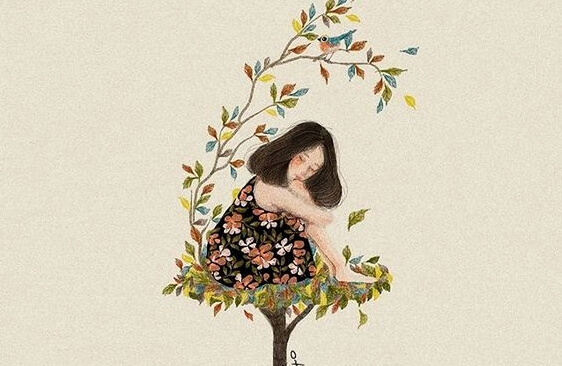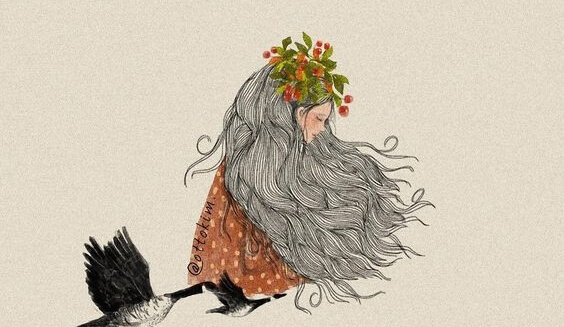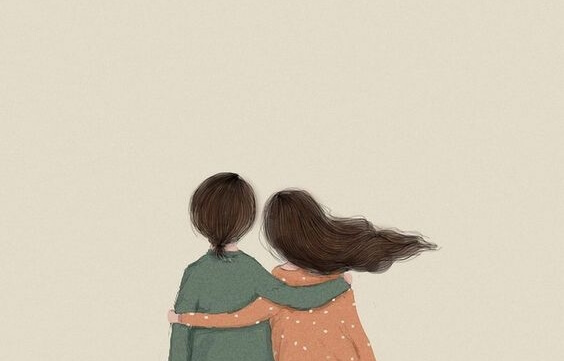It's So Simple to Be Happy and So Difficult to Be Simple


Written and verified by the psychologist Valeria Sabater
Sometimes we settle for things that don’t make us happy, whether out of habit, indecisiveness or fear. Our hearts rusts up and our mind get closed in by the barbed wire of our comfort zone.
Maybe we’re forgetting that being happy can be very easy; the hard thing is discerning what is important, what is fills us up and gives magic to our days. And then fighting for it.
Like they say, “it’s so simple to be happy but so difficult to be simple…” A short phrase but a profound truth. To understand it, let’s think about something for a moment.
Most us have been taught we need to achieve certain things in order to have an identity, get status, be a certain way to reach a certain goal.
“Happiness resides not in possessions, and not in gold, happiness dwells in the soul”
-Democritus-
We study and we get skills to get a job. We have a job to get a supposed state of happiness. Then we get possessions and relationships that are supposed to fill us with happiness. However, this formula isn’t always right. It doesn’t always add up.
Is happiness a scam? Absolutely. The true lie is that we believe we can “achieve” it. Because whoever insists on trying to find it will just fail over and over again.
The search for happiness never ends well for one simple reason: it is a state of being. It is not sought, it is created. It is not found, it is worked on.
And we can’t forget: the same strategies don’t work for everyone. Each one of us has to work on it in our own way.

From Hygge to Lagom: the fascinating world of Nordic utopias
Since 2015, there’s a word that’s been floating around: Hygge. The Danish secret to happiness has had overwhelming success, at least in the editorial world. It invites us to this full, authentic well-being via the purest, most basic simplicity, freeing us from conflict in life.
Well now Hygge has moved to the backseat to make room for new trends, other complementary approaches summed up in a new word: Lagom.
The Scandinavians are bringing the world a new trend which, as before, comes with pretty photos on Instagram. “Lagom” has been retweeted thousands of times in the last month and Vogue, Elle and even Ikea have jumped on the train.
Lagom can be translated as “just the right amount”. It encourages us, for example, to surround ourselves with the basics, the essentials. To buy only what we need, to care for the environment, to decorate our houses with the simplest things. To eat just how much we need.
Lastly, it reminds us of the importance of never allowing work to take over our life. You hear the idea that “less is more” and that happiness is found in simplicity.

That said, although these messages are positive and comforting, we can’t ignore all the marketing behind these trends. Nordic fever, with its crime dramas, lifestyle and cutting-edge healthy society is attractive, no doubt.
However, it may be a somewhat bitter utopia. That’s what a prize-winning essay by the British writer Michael Booth, titled “The Almost Nearly Perfect People”, explains. He tries to give a realistic vision of the apparent Nordic happiness, something already hinted at in Henning Mankell’s books.
One interesting fact is that the Nordic countries, apparently the happiest in the world, are number one in suicide rates. It seems like something is missing…
Create your own recipe to be happy
Books about how to be happy are always interesting and often helpful. They offer new perspectives, make us see things we may never had before. They invite us to reflect and to make changes here and there.
However, we must make it clear that they are not instruction manuals nor bibles. They don’t work for everyone, because sometimes, we live in very different worlds.
Happiness does not depend on external conditions, it is governed by our mental attitude.
-Dale Carnegie-
For example, it doesn’t make sense to be told not to let work take over our lives if we don’t have a job. Nor can we “live with the minimum” when what we already have is basic. With all of this, we want to make one thing clear: happiness is custom-built. It must fit our size and match our own life.

It takes effort, willpower and understanding that being happy can be very easy, without a doubt. But the hard thing is to get our priorities clear, which may be completely different than other people’s.
And that takes courage, not an Instagram photo of a woman reading a book with cozy wool socks and thick-rimmed glasses on, coffee by her side.
Sometimes, to be happy we have to leave everything behind and start again from zero. But other times, it may mean some real inner work to heal wounds, fix frustrations and find new motivation.
Let’s try to make difficult things easy, but also come up with our own recipe for happiness.
Images courtesy of Ottokim
Sometimes we settle for things that don’t make us happy, whether out of habit, indecisiveness or fear. Our hearts rusts up and our mind get closed in by the barbed wire of our comfort zone.
Maybe we’re forgetting that being happy can be very easy; the hard thing is discerning what is important, what is fills us up and gives magic to our days. And then fighting for it.
Like they say, “it’s so simple to be happy but so difficult to be simple…” A short phrase but a profound truth. To understand it, let’s think about something for a moment.
Most us have been taught we need to achieve certain things in order to have an identity, get status, be a certain way to reach a certain goal.
“Happiness resides not in possessions, and not in gold, happiness dwells in the soul”
-Democritus-
We study and we get skills to get a job. We have a job to get a supposed state of happiness. Then we get possessions and relationships that are supposed to fill us with happiness. However, this formula isn’t always right. It doesn’t always add up.
Is happiness a scam? Absolutely. The true lie is that we believe we can “achieve” it. Because whoever insists on trying to find it will just fail over and over again.
The search for happiness never ends well for one simple reason: it is a state of being. It is not sought, it is created. It is not found, it is worked on.
And we can’t forget: the same strategies don’t work for everyone. Each one of us has to work on it in our own way.

From Hygge to Lagom: the fascinating world of Nordic utopias
Since 2015, there’s a word that’s been floating around: Hygge. The Danish secret to happiness has had overwhelming success, at least in the editorial world. It invites us to this full, authentic well-being via the purest, most basic simplicity, freeing us from conflict in life.
Well now Hygge has moved to the backseat to make room for new trends, other complementary approaches summed up in a new word: Lagom.
The Scandinavians are bringing the world a new trend which, as before, comes with pretty photos on Instagram. “Lagom” has been retweeted thousands of times in the last month and Vogue, Elle and even Ikea have jumped on the train.
Lagom can be translated as “just the right amount”. It encourages us, for example, to surround ourselves with the basics, the essentials. To buy only what we need, to care for the environment, to decorate our houses with the simplest things. To eat just how much we need.
Lastly, it reminds us of the importance of never allowing work to take over our life. You hear the idea that “less is more” and that happiness is found in simplicity.

That said, although these messages are positive and comforting, we can’t ignore all the marketing behind these trends. Nordic fever, with its crime dramas, lifestyle and cutting-edge healthy society is attractive, no doubt.
However, it may be a somewhat bitter utopia. That’s what a prize-winning essay by the British writer Michael Booth, titled “The Almost Nearly Perfect People”, explains. He tries to give a realistic vision of the apparent Nordic happiness, something already hinted at in Henning Mankell’s books.
One interesting fact is that the Nordic countries, apparently the happiest in the world, are number one in suicide rates. It seems like something is missing…
Create your own recipe to be happy
Books about how to be happy are always interesting and often helpful. They offer new perspectives, make us see things we may never had before. They invite us to reflect and to make changes here and there.
However, we must make it clear that they are not instruction manuals nor bibles. They don’t work for everyone, because sometimes, we live in very different worlds.
Happiness does not depend on external conditions, it is governed by our mental attitude.
-Dale Carnegie-
For example, it doesn’t make sense to be told not to let work take over our lives if we don’t have a job. Nor can we “live with the minimum” when what we already have is basic. With all of this, we want to make one thing clear: happiness is custom-built. It must fit our size and match our own life.

It takes effort, willpower and understanding that being happy can be very easy, without a doubt. But the hard thing is to get our priorities clear, which may be completely different than other people’s.
And that takes courage, not an Instagram photo of a woman reading a book with cozy wool socks and thick-rimmed glasses on, coffee by her side.
Sometimes, to be happy we have to leave everything behind and start again from zero. But other times, it may mean some real inner work to heal wounds, fix frustrations and find new motivation.
Let’s try to make difficult things easy, but also come up with our own recipe for happiness.
Images courtesy of Ottokim
All cited sources were thoroughly reviewed by our team to ensure their quality, reliability, currency, and validity. The bibliography of this article was considered reliable and of academic or scientific accuracy.
- Contreras, F., & Esguerra, G. (2006). Psicología positiva: una nueva perspectiva en psicología. Diversitas, 2(2), 311-319.
- Csikszentmihalyi, M. (2012). Fluir: una psicología de la felicidad. Editorial Kairós.
- Cuadra, H., & Florenzano, R. (2003). El bienestar subjetivo: hacia una psicología positiva. Revista de Psicología, 12(1), ág-83.
This text is provided for informational purposes only and does not replace consultation with a professional. If in doubt, consult your specialist.







